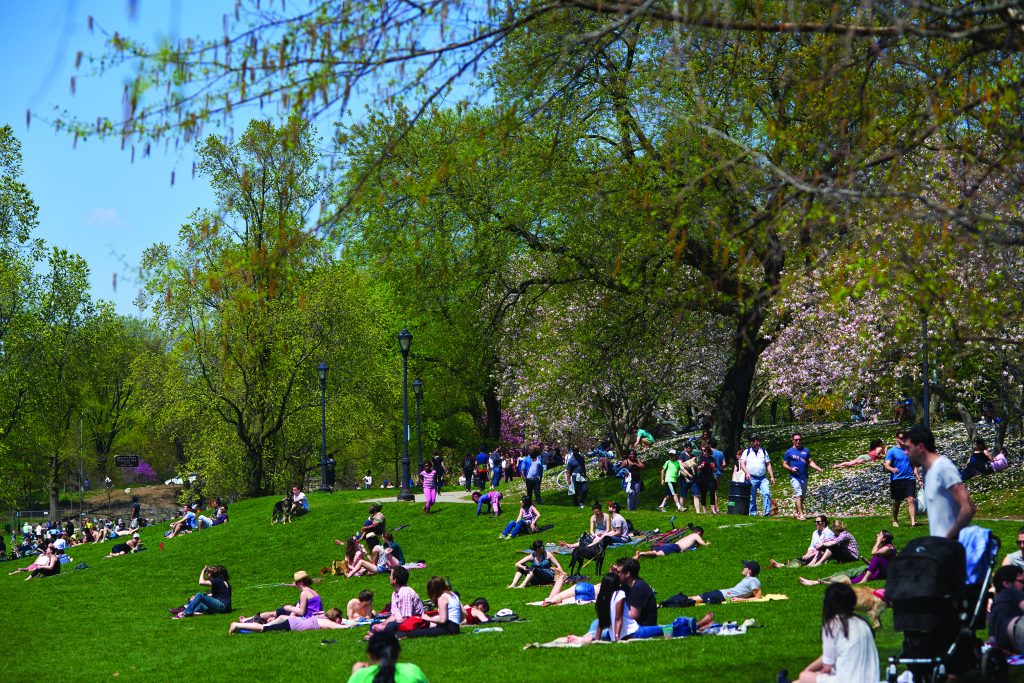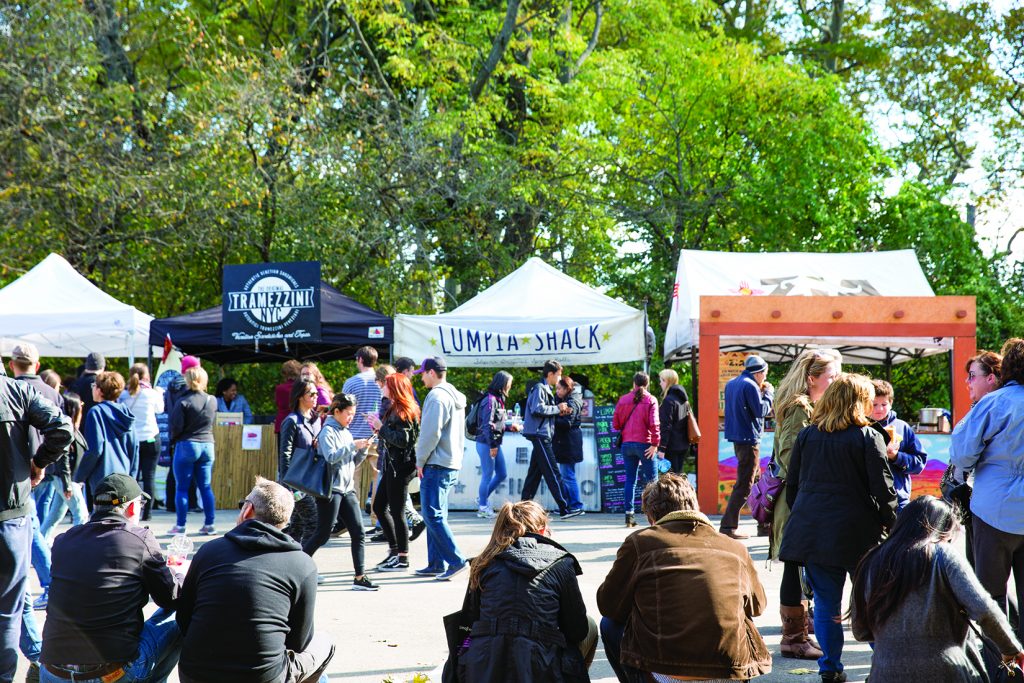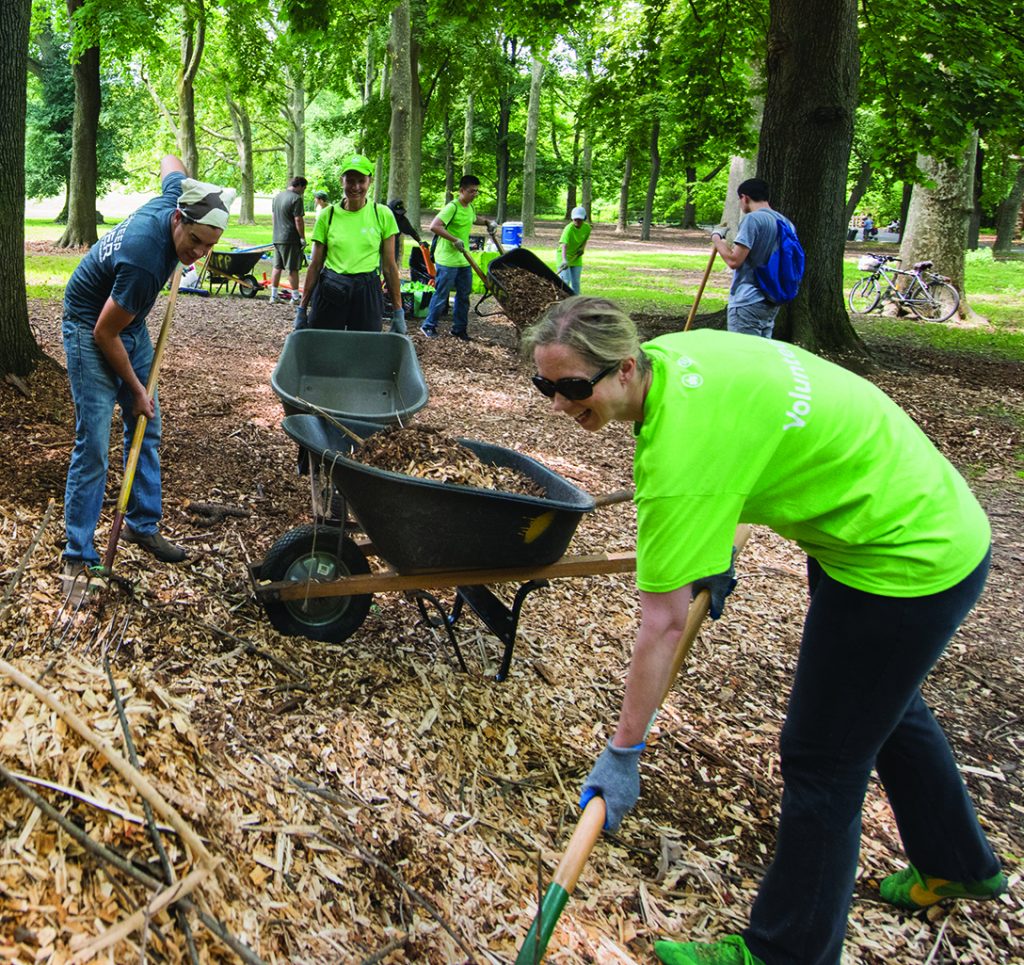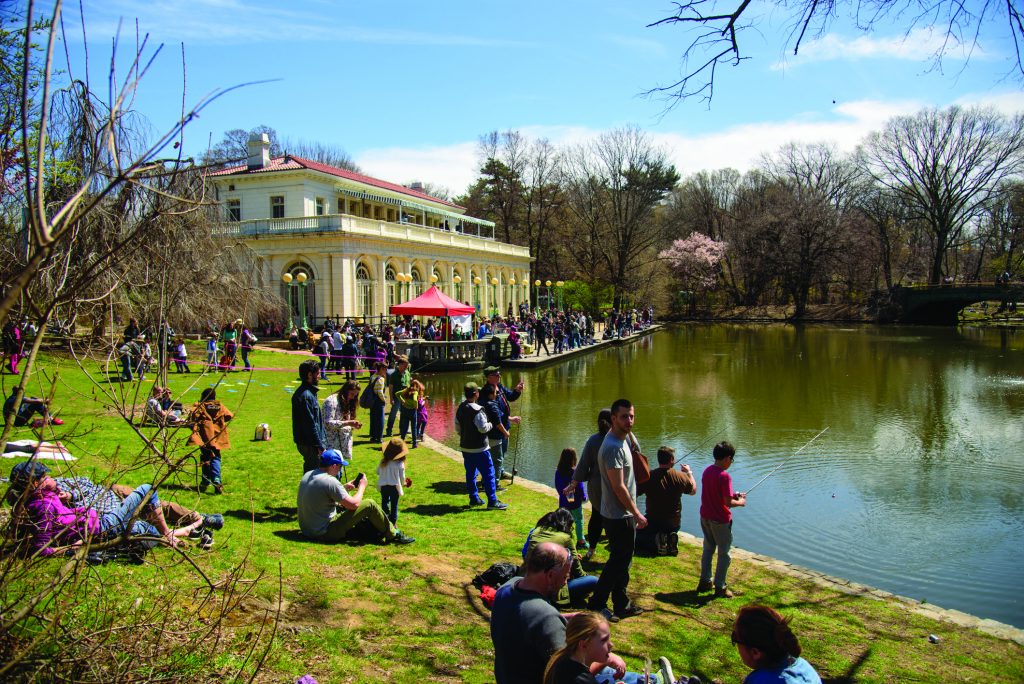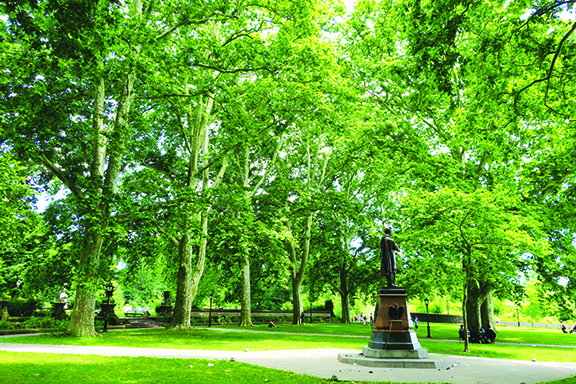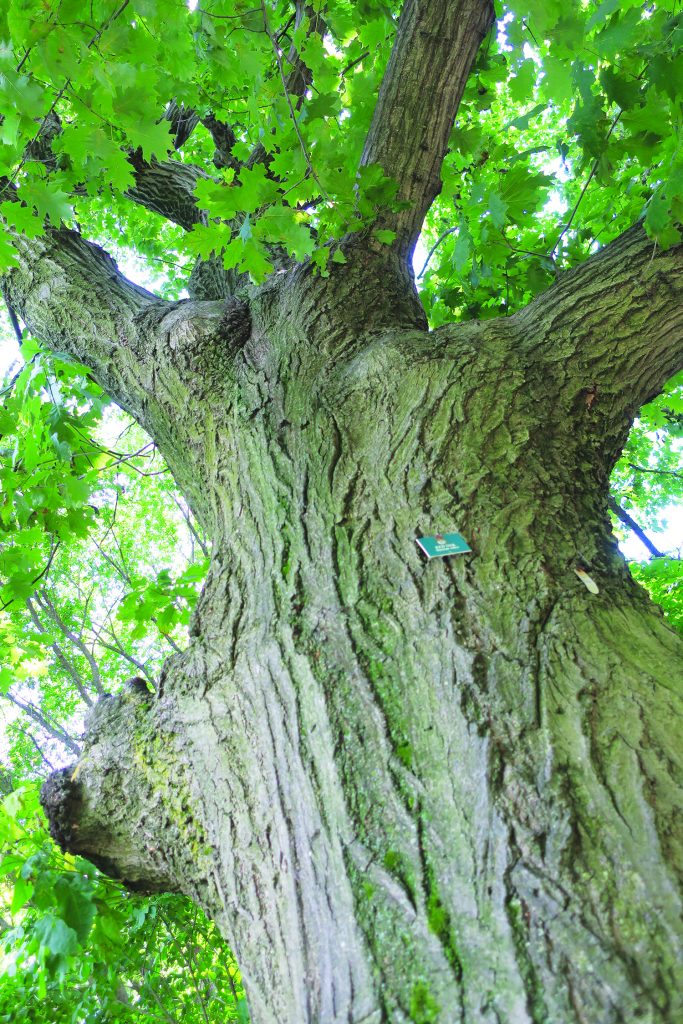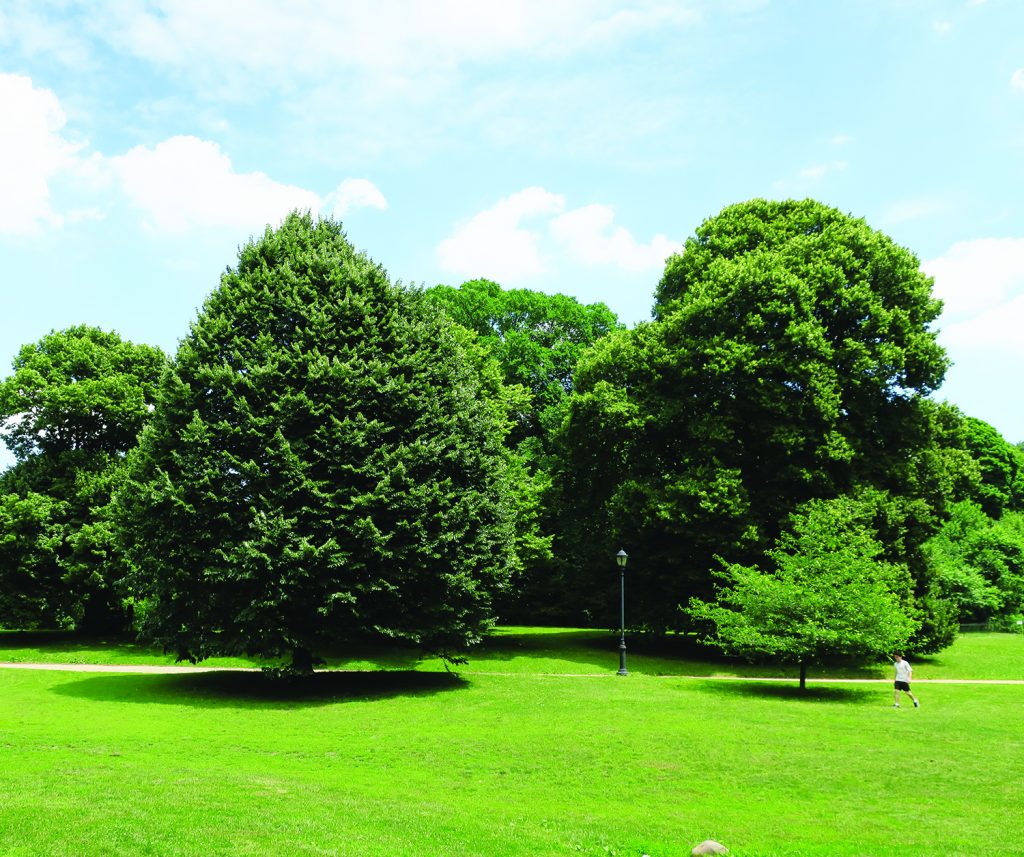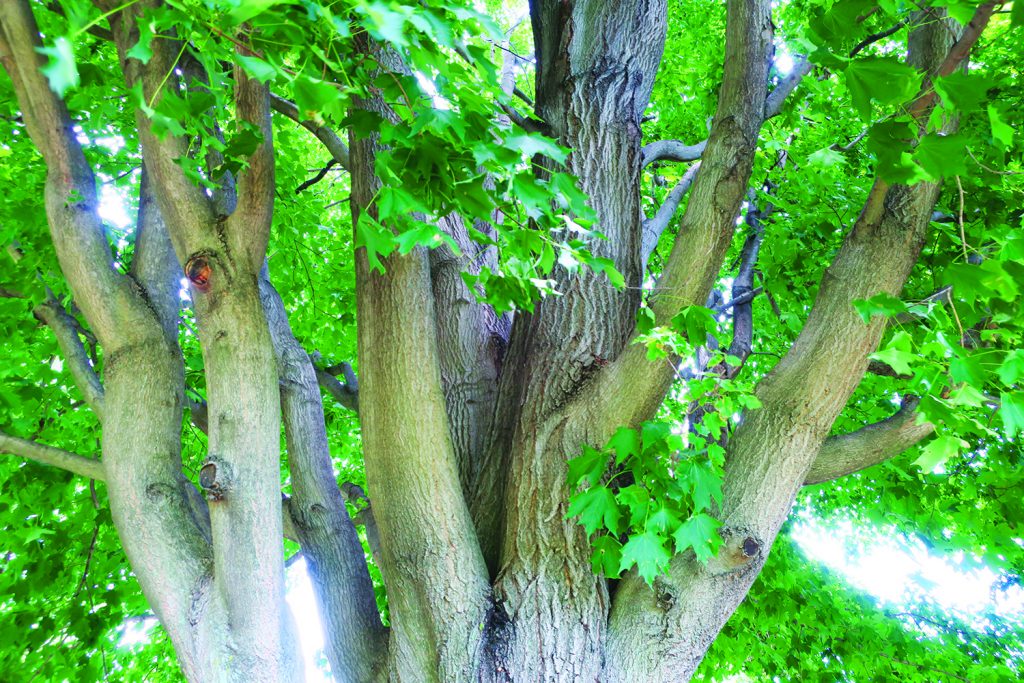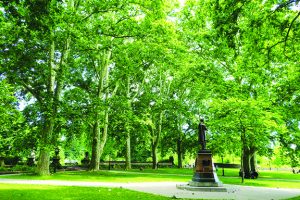
We take for granted the beauty of these verdant towers, how we come to expect their shade and fail to acknowledge their constant toil as the city’s respiring lungs and filtering kidneys.
The first time I climbed a tree, in the summer of 2008, I was working a seasonal job for the Parks Department. My job was to muscle logs and stacked branches into a chipper, but a fringe benefit was working with the climbers and pruners. These professional arborists spend their days up in Brooklyn’s urban tree canopy inspecting, pruning and sometimes removing trees. For a young guy whose interest in comic books and environmental science never really seemed to intersect, here I had found my real-life superheroes. For several weeks in the swampy heat of July, I would finish my wood-chipping route at a feverish pace to ensure I could carve out time at the end of the day to meet up with a climber, throw a rope up over a high branch and use a technique called hip-thrusting to hump my way into the tree, exploring the otherworldly environment that exists within the sprawling space of a tree’s canopy and the views it affords to those who climb it.
London plane
Five years later I was back in a harness, standing on an upper limb of a London plane tree in the middle of Grand Army Plaza, holding a dead branch in one hand as I sawed it off with the other. Below me traffic was circumnavigating the plaza and above me squirrels were making similar circles around the tree in lusty chase of one another. I was taking a test to become the junior arborist for the Prospect Park Alliance. My new boss was right beside me, dangling comfortably in his harness. I’d passed, he said, in no rush to vacate our lofty perch with views straight down Flatbush Avenue. I realized, from the vantage point of the birds, what a large role trees play in our urban existence. How we take for granted the beauty of their verdant towers, how we come to expect their shade and fail to acknowledge their constant toil as the city’s respiring lungs and filtering kidneys.
By then I was hooked on trees, taking every opportunity to defend their place in our urban environment and teach people more about them. Here’s a fact: the London plane tree, unmistakable when it sloughs off its thin beige and green bark to reveal a slippery smooth new layer, is the most common street tree in the borough of Brooklyn. The ubiquity of this tree in the city is no accident. Street trees suffer from almost every arboreal insult possible, from drought and flood to storm damage, limited growing space and constant assault by speeding vehicles. Few trees are better at withstanding these stressors than the London plane. But they also indicate that the city has a long way to go in making our streets a more habitable environment. Where trees can’t grow neither can people or communities.
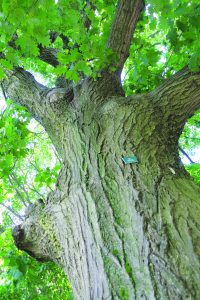
The Mighty Oak
If street trees are a civil engineer’s answer to mitigating intense weather, then our large parks and urban forests are a naturalist’s haven for maintaining biological diversity and environmental resilience. To say nothing of the way that parks can act as a tincture to calm the soul. Starving artists, disciplined runners, stray cats, role-playing camp kids, dogs pulling their humans, Baby Bjorn-bound mothers, hyperactive chipmunks, stony-faced little-leaguers; Everyone sought respite from their frantic lives in Prospect Park. With all those people it is hard to imagine there is room for between thirty and forty thousand trees in the park. The woodlands represent the only native forest in Brooklyn. Two hundred years ago, as Brooklyn’s population was booming its ancient woods had mostly disappeared to make room for farms. In fact, when the park was constructed in the middle of the 19th century it was on top of nearly treeless pastureland.
Now the park’s woodlands are lush with trees, shrubs, and wildlife. The keystone species in our neck of the woods is the oak tree. Oaks come in many sub-species, adapted to specific niches like the marsh-loving willow oak or the red oak which seeks out hilltops. In all cases, the oak is the beginning of a biological chain that stretches from the fungus feeding at its roots to the plants that bask in its diffused sunlight all the way up the chain to the squirrel glutted on acorns or the Redtail hawk feasting on a squirrel.
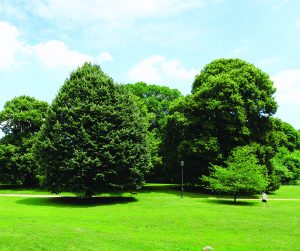
American Linden
The balancing act for urban forestry is to harness the vast positive effects of nature’s most beneficial flora while limiting the negative factors a tree can produce. Since every tree has a different profile of benefits it takes a lot of consideration to get it right. A red maple can soak up plenty of water in flood prone areas but its roots can be invasive to nearby homes. The horse chestnut is one of the most efficient carbon dioxide absorbers but its weak wood can peel apart in heavy storms.
A few months back I had to stage a defense for an American linden tree. The Linden is a great shade tree as well as a reliable flower feast for native bees. This one was decades old and its roots were lifting the sidewalk around it. The construction crew wanted to remove it. The homeowners nearby also didn’t like the pollen which littered their stoop every year. I argued to keep it. It was healthy, it was mature enough to finally be making a net contribution to its environment. We ended up saving the tree and putting a ramped sidewalk over the roots. Days later I walked up to the site, sweating under the hot afternoon sun, watching the posse of homeowners and construction workers chatting. I was making a beeline for relief to the same area they were all standing in, under the shade of that very linden tree.
Sugar Maple
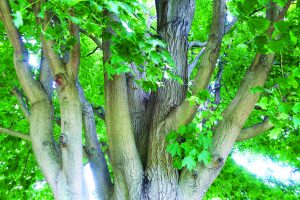
Arboriculture, the cultivation and management of trees, is ever-evolving. Climate change plays its part. Many people know that the state tree of New York is the sugar maple. Not only because I guzzle maple syrup do I love this majestic tree with eye-popping fall foliage and mature bark that evokes the wise and grizzled visage of Dumbledore’s beard. The sugar maple is a foundational part of Northeastern American culture. Literally, sugar maple timber provides much of the framework and flooring for some of the oldest structures in this part of the country. In recent years local sugar maples have been in decline. Its natural defenses consist of growing in places where the winter is cold enough to kill off most of its pests without harming the cold-hardy tree. Brooklyn used to fall more reliably into that temperate zone, but now climate change is shifting the territory of New York’s state tree outside of New York City.
As we introduce new non-native trees to our city blocks like the Korean mountain ash or the Siberian elm we are also in the process of losing many of our critical native species. American Elms once lined neighborhood blocks, providing shade with sprawling behemoth branches. Then Dutch elm disease decimated the population. The American chestnut used to hold a more important place in our forests than the oak until the chestnut blight changed that. Now invasive pests and fungi are posing serious threats to our maples, oaks, and pines. In a world of unfettered global trade our new normal for ecology is ceaseless change.
For now, Prospect Park still feels like home in my native, ever-changing Brooklyn. Its trees make up an indelible part of my story. Prospect Park just celebrated its 150th anniversary this past fall. Does that make it old by public park standards or young in comparison to the life of an oak tree? Lately, I make it out into the Park less often, mostly losing myself in its interior, finding locations I’ve known and yet still never really discovered.

